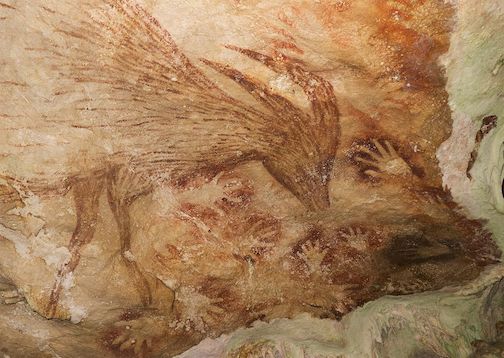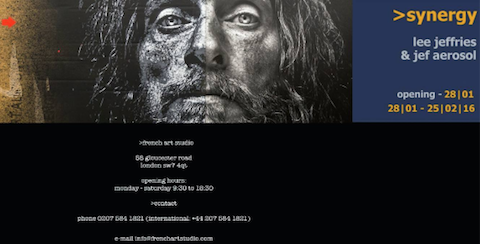 A Journey to the Oldest Cave Paintings in the World
A Journey to the Oldest Cave Paintings in the World
The discovery in a remote part of Indonesia has scholars rethinking the origins of art—and of humanity
By Jo Marchant
The Smithsonian Magazine, January 2016
I struggle to keep my footing on a narrow ridge of earth snaking between flooded fields of rice. The stalks, almost ready to harvest, ripple in the breeze, giving the valley the appearance of a shimmering green sea. In the distance, steep limestone hills rise from the ground, perhaps 400 feet tall, the remains of an ancient coral reef. Rivers have eroded the landscape over millions of years, leaving behind a flat plain interrupted by these bizarre towers, called karsts, which are full of holes, channels and interconnecting caves carved by water seeping through the rock.
We’re on the island of Sulawesi, in Indonesia, an hour’s drive north of the bustling port of Makassar. We approach the nearest karst undeterred by a group of large black macaques that screech at us from trees high on the cliff and climb a bamboo ladder through ferns to a cave called Leang Timpuseng. Inside, the usual sounds of everyday life here—cows, roosters, passing motorbikes—are barely audible through the insistent chirping of insects and birds. The cave is cramped and awkward, and rocks crowd into the space, giving the feeling that it might close up at any moment. But its modest appearance can’t diminish my excitement: I know this place is host to something magical, something I’ve traveled nearly 8,000 miles to see.
Scattered on the walls are stencils, human hands outlined against a background of red paint. Though faded, they are stark and evocative, a thrilling message from the distant past. My companion, Maxime Aubert, directs me to a narrow semicircular alcove, like the apse of a cathedral, and I crane my neck to a spot near the ceiling a few feet above my head. Just visible on darkened grayish rock is a seemingly abstract pattern of red lines.
 JEF AEROSOL & LEE JEFFRIES
JEF AEROSOL & LEE JEFFRIES
 21,000 uploads to the Stencil Archive. Here's to 1,000s more.
21,000 uploads to the Stencil Archive. Here's to 1,000s more. A Journey to the Oldest Cave Paintings in the World
A Journey to the Oldest Cave Paintings in the World Colonial Williamsburg presents theorem art at Abby Aldrich Rockefeller Folk Art Museum
Colonial Williamsburg presents theorem art at Abby Aldrich Rockefeller Folk Art Museum The TARDIS gets a stencil. More surprises in store for today's Stencil Archive uploads. Music support by WRAS, WREK, and KTRU. Rainy December day in San Francisco. Enjoy things indoors with more stencils.....
The TARDIS gets a stencil. More surprises in store for today's Stencil Archive uploads. Music support by WRAS, WREK, and KTRU. Rainy December day in San Francisco. Enjoy things indoors with more stencils..... Have any plans Sunday, November 15? Come out to the
Have any plans Sunday, November 15? Come out to the